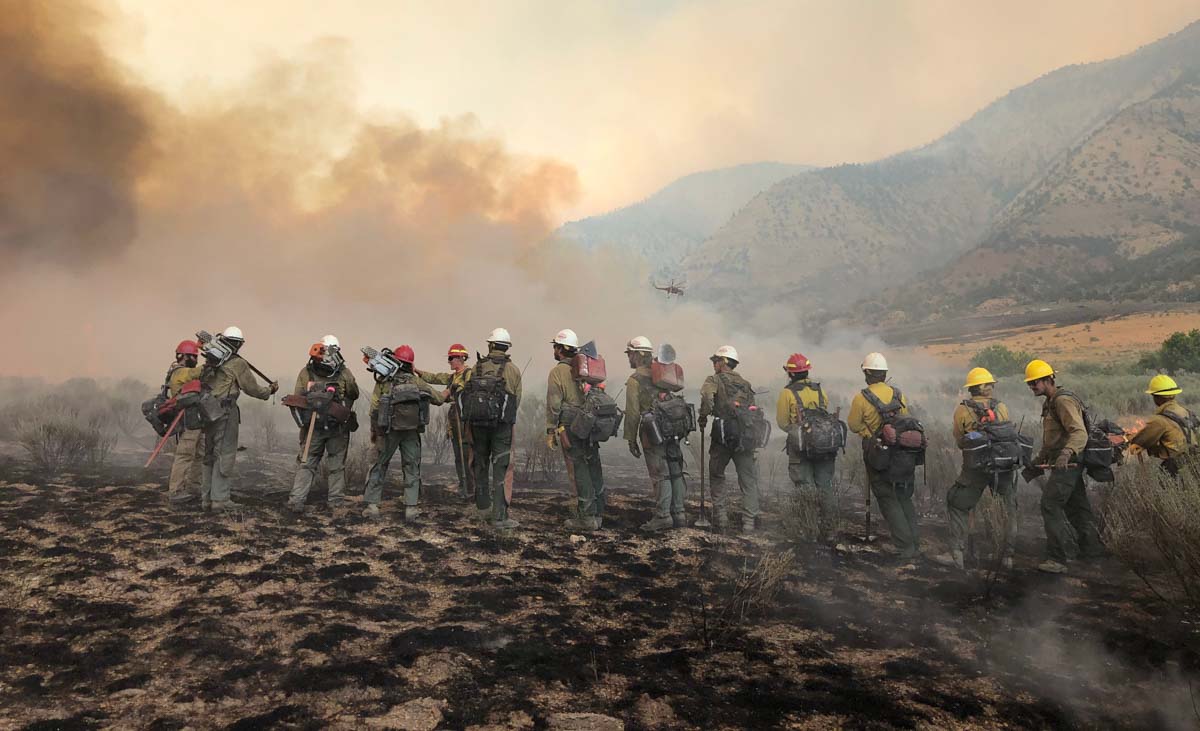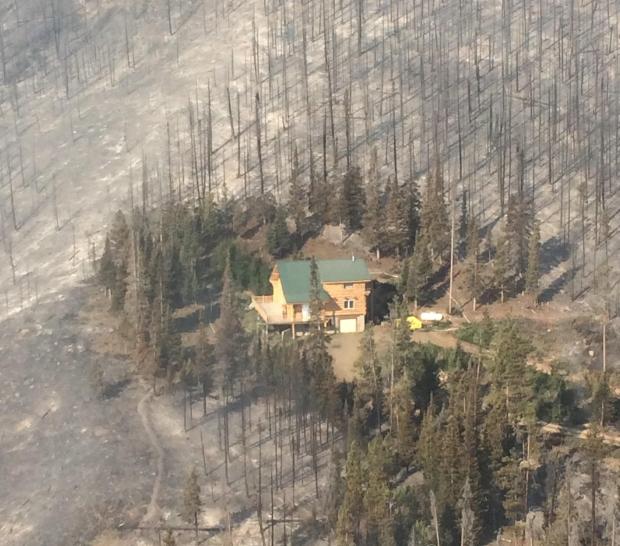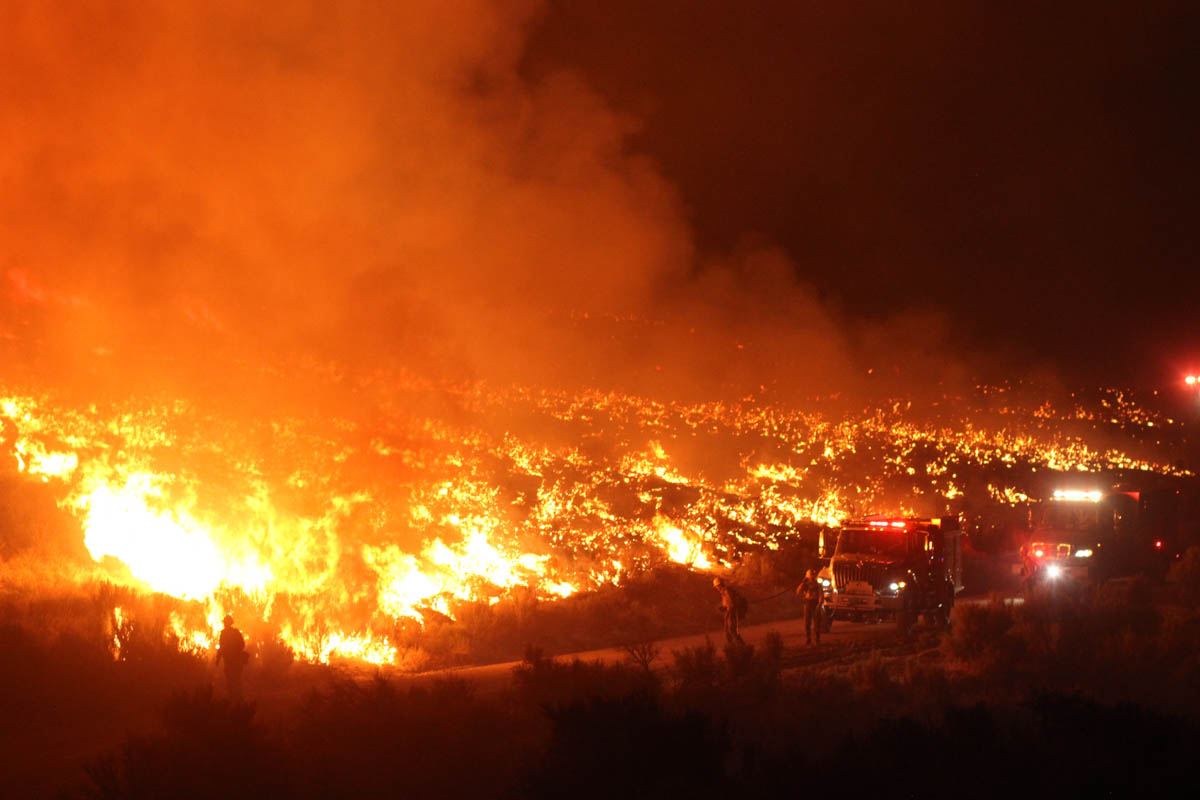The draft of a bill being worked on by a bipartisan group of Senators includes a $20,000 raise for some Federal wildland firefighters and a new job series.
The provisions are part of an infrastructure bill written by Senator Manchin and nine other Senators from both parties. The total scope of the legislation could spend $1 trillion or more. About $3.5 billion would be appropriated for wildland fire programs in the US Forest Service and the four land management agencies in the Department of the Interior.
One of the provisions would appropriate $600 million to give some firefighters a $20,000 bump in salary. The amount would be the same, regardless of their regular pay grade. For those working less than year-round, the raise would be prorated — work for six months and receive an increase of $10,000, for example. The catch is, it would only apply to firefighters whose pay is “lower than the minimum wage of the applicable State, or if the position is located in a location where it is difficult to recruit or to retain a wildland firefighter or wildland fire manager.” The bill does not specify who would decide if those conditions exist, but it could be argued that it is difficult to recruit and retain Federal wildland firefighters in most locations.
The bill would also have the Department of Agriculture work with the Office of Personnel Management to “develop a distinct ‘wildland fire manager’ occupational series.” Those presently employed would have the option of moving to the new series, but it would not be required.
On June 16 a group of 20 Senators released a statement saying they support the bipartisan infrastructure package. Of the 20, 11 are Republicans. If they all actually vote for the legislation, it would pass –if all Democrats are also in favor, which is not certain. Some have indicated they will oppose the bill which they say does not do enough to fight climate change or income inequality. If any Democrats oppose the plan, more than 10 Republicans would need to back it for it to hit the 60-vote threshold to pass legislation in the Senate. But it is key that Senator Manchin, Chair of the Senate Committee on Energy and Natural Resources and a Democrat who frequently votes with Republicans, had a large part in drafting the bill.
The Associated Press reported that President Biden told reporters yesterday he had yet to see the emerging proposal from the group but remained hopeful a bipartisan agreement could be reached, despite weeks of on-again, off-again talks over his more robust $1.7 billion American Jobs Plan.
The 423-page bill has many other fire-related provisions. All of the funds listed below, except as noted, will be for both the US Forest Service and the four land management agencies in the Department of the Interior.
- $100 million to work with the National Weather Service to establish and operate a satellite program to rapidly detect and report wildfire starts in areas where the two Departments have the responsibility to suppress wildfires.
- Convert no fewer than 1,000 seasonal wildland firefighters to full-time year-round Wildland Fire Manager positions and reduce hazardous fuels on Federal land at least 800 hours per year. (Note from Bill: 800 hours would be 38 percent of each firefighters base time, a major change in their job duties. The $600 million allotted for the salary increase includes enough to pay for the conversion of the seasonals to permanent full-time.)
- $20 million to acquire technology and infrastructure for each Type 1 and Type 2 incident management team to maintain interoperability with respect to the radio frequencies used by any responding agency.
- $30 million to provide financial assistance to States and units of local government to establish and operate Reverse-911 telecommunication systems.
- $100 million for the Secretary of the Interior to establish and implement a pilot program to provide to local governments financial assistance for the acquisition of slip-on tanker [fire engine] units to establish fleets of vehicles that can be quickly converted and operated as fire engines.
- $20 million for research conducted under the Joint Fire Science Program.
- $50 million for conducting mechanical thinning and timber harvesting in an ecologically appropriate manner that focuses, to the extent practicable, on small-diameter trees.
- $500 million for the Secretary of Agriculture to award community wildfire defense grants to at-risk communities.
- $500 million for prescribed fires.
- $500 million for developing or improving potential control locations, including installing fuel breaks, with a focus on shaded fuel breaks when ecologically appropriate.
- $200 million for contracting or employing crews of laborers to modify and remove flammable vegetation on Federal land and use the resulting materials, to the extent practicable, to produce biochar, including through the use of the CivilianClimate Corps.
- $200 million for post-fire restoration activities that are implemented not later than 3 years after the date that a wildland fire is contained.
The Grassroots Wildland Firefighters organization has been very active in recent months, advocating for pay for federal firefighters that is competitive with the companies and agencies that are luring personnel to leave the Federal government to come work for far better pay and benefits. When told about the draft legislation, Kelly Martin, their President, said they have been advocating for elimination of the 25 percent hazard duty pay when working on a fire and a 50 percent increase in base salary, which she thought would be more appropriate than a $10,000 to $20,000 boost in pay. The organization also wants their firefighters who are classified as Forestry or Range Technicians correctly placed into a Wildland Firefighter job series. Ms. Martin said that lower and mid-level firefighters are not managers, so they should not be in a Wildland Fire Manager job series as proposed in the draft legislation.
My Take:
This bill has a long way to go before it is voted on, so the provisions could change. That will provide a window for firefighters to contact their Senators to express their opinion, ask for modifications of the content, or add items not included.
Changing the firefighters’ job titles from Forestry or Range Technician to Wildland Fire Manager is not a major step forward. It is too vague and might be confused with managing a less than full suppression fire. Like Ms. Martin said, it incorrectly describes rookie and mid-level firefighters as “managers”, and could lead to arguments about firefighter retirement and pay suitable for firefighters. They need a new Wildland Firefighter job series with a new pay schedule commensurate with their duties and competitive in the field.
This proposed legislation, which is yet to be introduced, does not have everything many firefighters are hoping for, but it may be like the infrastructure specifications that are not everything that some Democrats want. Unless there is more specific legislation being seriously proposed that would better address firefighter issues, it could be worthy of support if some of the provisions are changed. But it leaves out a more reasonable pay plan, presumptive illnesses, better support for mental and physical health issues, and a larger workforce to match the “new normal” very large fires which threaten homeland security.









